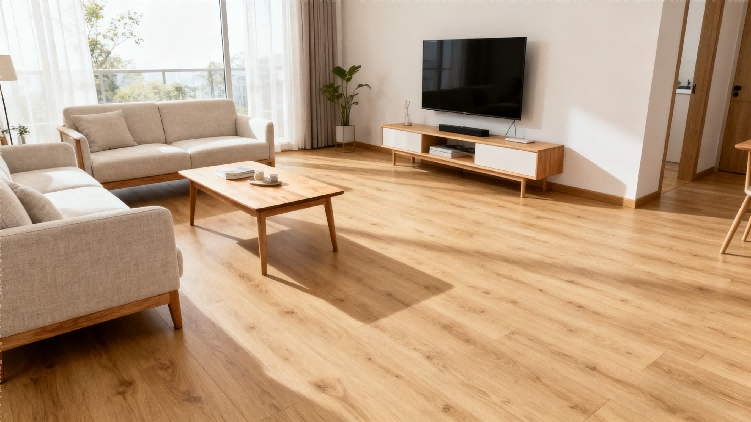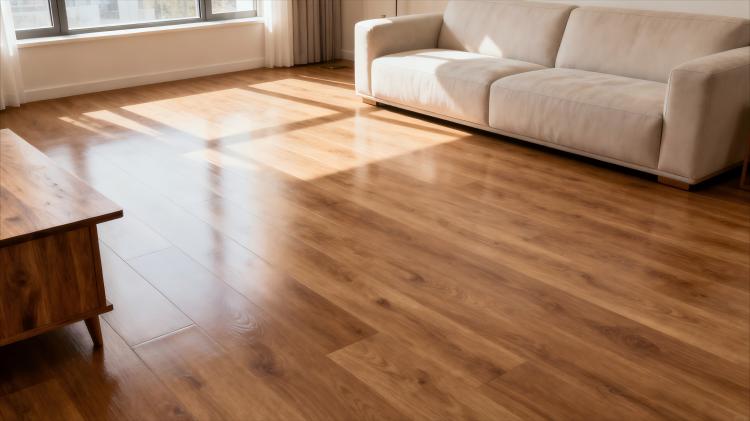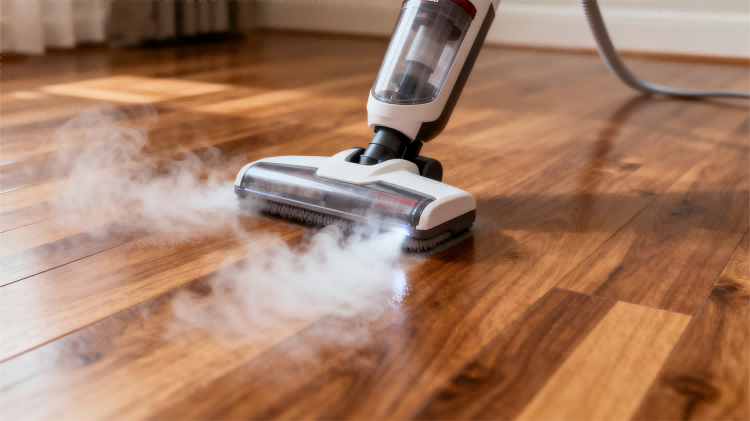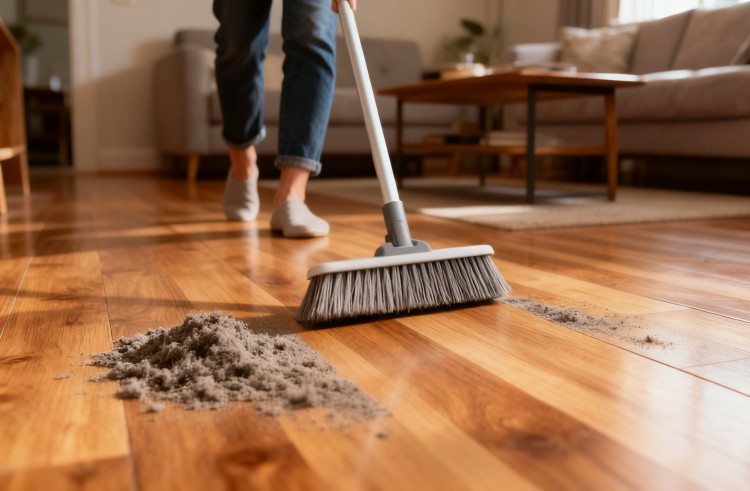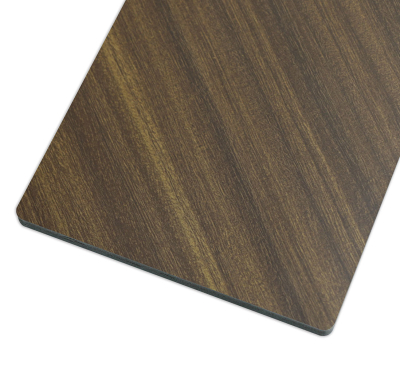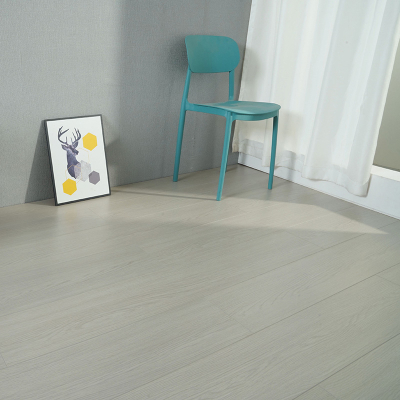Understanding the "enemies" of laminated flooring
Introduction: Understanding the "Enemies" of Laminated Flooring
Laminated flooring is a type of composite flooring whose structure is similar to a "sandwich". From top to bottom, it usually includes:
Wear-resistant layer: This is the most crucial protective layer, mainly composed of transparent Aluminum Oxide, providing outstanding resistance to wear, impact and ultraviolet rays.
Decorative layer: A high-resolution sheet of paper printed with realistic wood grain, stone grain and other patterns.
Core layer: High-density fiberboard (HDF), which serves as the framework of the floor, provides structural strength and a locking system. This layer is the "Achilles' heel" of laminate flooring and is extremely sensitive to moisture.
Balance layer: The resin-impregnated paper at the bottom layer is used for moisture-proofing and stabilizing the structure to prevent the floor from twisting.
Based on this structure, there are two core principles for cleaning laminated floors:
Protect the wear-resistant layer: Avoid any substances that may cause scratches, corrosion or make it cloudy.
Strictly prevent water penetration: Avoid excessive water seeping into the joints between the boards, which could cause expansion and deformation of the HDF core layer.
Below, we will systematically analyze all the cleaning agents and cleaning methods that should be placed on the "blacklist" and explain the scientific principles behind them.
The first category: Cleaning agents that form residual films
This type of cleaner will not immediately damage the floor, but through long-term accumulation, it will cause irreversible damage to the appearance and performance of the floor.
1.Wax, polishing agents and gloss enhancers
Specific products: including but not limited to floor wax, furniture spray, and "brightening" cleaners designed for Vinyl or Linoleum floors.
Analysis of Professional Principles
Physical incompatibility: The surface gloss of laminated flooring is pre-determined in the factory through the wear-resistant layer, usually matte, mercerized or high-gloss. It does not have a porous surface like solid wood flooring that can be sanded and repainted. Wax and polish cannot penetrate or combine with the aluminum oxide layer; they can only form a temporary, sticky physical film on the surface.
Negative chain reaction
Adsorbing dirt: This film becomes a powerful "adhesive" for dust, pet hair and dirt, causing the floor to get dirtier with each mop and creating a vicious cycle.
Causing slippiness and glare: The residual film can reduce the friction of the floor, posing a safety hazard. Uneven application can also cause striped glare, affecting the appearance.
Subsequent maintenance disaster: Once a wax layer forms, ordinary water or ph-neutral detergent will be unable to remove it. You will need to purchase a dedicated "wax remover", which is a labor-intensive and risky process because the wax remover itself is a powerful chemical.
Manufacturer's position: All major laminated floor manufacturers explicitly prohibit the use of such products in their warranty terms. Using them will result in the invalidation of the product warranty.
2. Soaps and soap-based cleaners
Specific products: traditional bar soap, liquid soap, dishwashing liquid and some soap-based cleaning liquids that claim to be "natural".
Analysis of Professional Principles
The formation of soap scum: Soap substances undergo chemical reactions with calcium and magnesium ions in hard water, generating insoluble fatty acid salts, which we commonly refer to as "soap scum". Even in soft water areas, soaps are not easy to be thoroughly rinsed off.
Similar hazards to wax residue: This sticky residue will quickly attract dirt, making the floor look dull and sticky underfoot. To remove it, you have to use more water to wipe repeatedly, which greatly increases the risk of water seeping into the seams, falling into the vicious circle of "clean - residue - dirtier - more water to clean".
The second category: Physical destructive cleaning agents and tools
This type of product directly wears down or scratches the wear-resistant layer of the floor through mechanical action.
3. Abrasive cleaners and tools
Specific products
Cleaning agents: scouring powder, baking soda (dry use), cleaning cream containing rough particles.
Tools: Steel wool balls, hard-bristled brushes, rough scouring pads, Scotch-Brite floor MATS.
Analysis of Professional Principles
Abrasive wear mechanism: Although aluminum oxide has extremely high hardness, its surface gloss depends on a complete and smooth paint protective layer. Under pressure, abrasive particles will cause tiny scratches (micro-cutting and plastic deformation) on this protective surface just like sandpaper.
Cumulative effect: It may not be obvious with a single use, but after multiple uses, these micro-scratches will accumulate into macroscopic wear and tear. The floor will thus lose its luster and become dull and rough. A dull surface scatters more light, making scratches and stains more conspicuous, and a rough surface is more likely to accumulate dirt and grime, increasing the difficulty of cleaning.
The third category: The "Ultimate Killer" of water and Heat
This is the type that causes the most and fastest structural damage to laminated flooring.
4. Steam mop
Analysis of Professional Principles
The ultimate water penetration: The high temperature (usually over 100°C) and high-pressure steam generated by steam mops have molecular kinetic energy far higher than that of liquid water at normal temperature. This high-temperature steam has extremely strong permeability and can easily penetrate the seams between plates that are almost invisible to the naked eye.
A devastating blow to the core layer of HDF: HDF boards are essentially made of wood fibers and adhesives under high pressure, and their internal structure is like a water-absorbing sponge.
High-temperature effect: High temperatures can slightly soften the adhesive in the board itself and cause the board to expand. Under the effect of thermal expansion, tiny joints may temporarily enlarge.
Moisture effect: After high-pressure steam enters the joint, it condenses into water when the temperature drops and is directly absorbed by the HDF board. After absorbing moisture, wood fibers will expand. Due to the different expansion rates in various directions, it can cause irreversible warping, Cupping, bulging at the joints of the floor, and even the failure of the locking system.
Industry consensus: No responsible laminate flooring manufacturer would recommend or approve the use of steam mops. Damage caused by using a steam mop is almost 100% not covered by the warranty.
5. Excessive water - The most common misconception
Analysis of Professional Principles
The definition of "slightly wet" : When cleaning laminated floors, the ideal state of a mop or cloth is "wring out until there are no water droplets". After cleaning, the floor should air dry naturally within 5 to 10 minutes.
The water absorption and swelling property of HDF: Once there is retained moisture (especially puddles that were not dried in time during cleaning) seeping through the seams, the HDF board will quickly absorb water. Its expansion rate is usually between 8% and 18%. Even a 1-2% increase in humidity is sufficient to create significant pressure at the seams, causing the edges to bulge. This kind of damage is usually irreparable and can only be replaced.
The fourth category: Chemical corrosion cleaners
This type of cleaner directly destroys the molecular structure of the wear-resistant layer through chemical reactions.
6. Strong acid and strong alkali cleaners
Specific products
Strong acidity: Toilet cleaner, cement dissolver, rust remover, certain stone cleaners.
Strong alkalinity: High-concentration bleach, oven cleaner, ammonia water, degreaser.
Analysis of Professional Principles
Chemical corrosion: The aluminum oxide wear-resistant layer itself has stable chemical properties, but the resin coating covering it and the material at the joints may not be able to withstand the long-term erosion of strong acids or strong alkalis. These chemicals can cause the coating to decompose, turn yellow, become sticky or lose its luster.
Fading of the decorative layer: Strong oxidizing bleach and ammonia water can directly cause the dye on the decorative layer paper to fade or change color, permanently damaging the floor pattern.
Unnecessary risks: For the daily dirt (dust, footprints, food stains) on laminated floors, there is no need to use such powerful chemicals at all.
Professional recommended cleaning and maintenance solutions
After understanding all the taboos, it is crucial to establish a correct cleaning process.
1. Daily maintenance (preventive cleaning)
Place doormats at the entrance to reduce the entry of sand and gravel.
Use a soft-bristled broom, electrostatic mop or vacuum cleaner (set to hard floor mode and ensure the roller brush is undamaged) to remove surface dust and sand particles daily or every other day. This is the most effective way to prevent scratches.
2. Regular wet wiping (core cleaning)
First choice: Specialized laminate floor cleaner.
Advantages: These products are developed by floor chemistry experts, have a neutral pH value, and contain no soap, wax, dyes or alcohol. They can effectively decompose dirt without leaving any residue. Some products also contain polymer components that can form an extremely thin protective film on the surface to resist static electricity and dust.
Usage method: Dilute strictly in accordance with the instructions on the bottle. Spray the diluted solution onto a slightly damp microfiber mop or directly onto the floor and wipe it in sections immediately.
Second choice/Traditional method: a very dilute solution of white vinegar.
Recipe: Add 1 cup (about 240 milliliters) of white vinegar to 1 gallon (about 3.8 liters) of warm water. Please note that this is a very low concentration (about 6%).
Disputes and Notes
Advantages: Acetic acid is a weak organic acid that can gently kill bacteria and neutralize alkaline dirt, and it leaves no residue after evaporation.
Disadvantage: Some manufacturers object, as the long-term use of acidic solutions may theoretically have an extremely weak potential impact on the bonding at the seams.
Suggestion: First, check your floor warranty manual. If used, make sure the solution concentration is extremely low and the mop is wrung out very dry. Use no more than once a month and alternate with other neutral cleaners.
3. Stubborn stain treatment
Lipstick, crayons, asphalt: Dip a piece of cloth in a small amount of acetone or nail polish remover, gently wipe the stain, and immediately wipe the area with a clean, slightly damp cloth to neutralize it.
Oil stains, chewing gum: First cool the hardened stains with ice cubes, carefully scrape off most of them, then wipe the residue with a slightly damp cloth dipped in a small amount of isopropyl alcohol (rubbing alcohol).
Red wine and fruit juice: Immediately wipe with a slightly damp cloth dipped in a small amount of the special laminated floor cleaner. For dried stains, you can try using a piece of cloth dipped in a small amount of ammonia water window glass cleaner (with a very low ammonia water concentration) to wipe, and quickly follow up with a damp cloth in clean water.
Summary
Cleaning laminated flooring is not difficult. The essence lies in "less is more" - less moisture, milder chemicals, and gentler physical contact. Avoiding the use of wax, soap, abrasives, steam and strong acids and alkalis is the key to protecting your investment. Always regard the manufacturer's usage and maintenance guidelines as the highest standard. This not only helps maintain the beauty of the floor for a long time but also serves as the cornerstone for ensuring the validity of the product warranty. With scientific cleaning methods, your laminated floor can remain as good as new for a long time and accompany you for a longer period.

